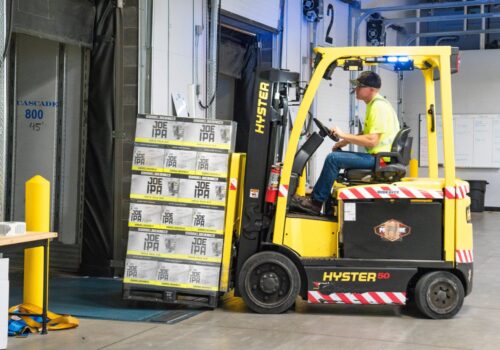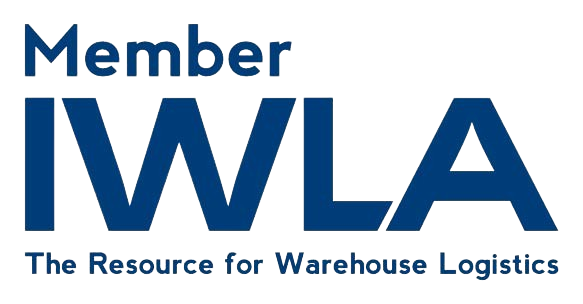Cross-Docking in NC
The supply chain is demanding and competitive, and getting supplies as quickly as possible to consumers is critical for success in the industry. As a leading third-party logistics provider, Crown LSP Group covers you if you’re looking for a cross-dock facility in North Carolina. We offer various value-added services to help your business maximize productivity and ensure customer satisfaction.
We consider ourselves an extension of your enterprise and treat your operations with the same respect and care you do. Our experienced personnel will handle your products according to industry best practices and provide thorough documentation to maintain accuracy throughout daily operations. If you need a trusted cross docking provider in North Carolina, depend on us to care for your goods.
Streamline Your Supply Chain with Our Cross Docking Services
Cross docking involves the logistical process of directly transferring incoming goods from one truck to another to speed up the delivery of products to the final consumer. This value-added solution ensures that goods continue quickly and efficiently moving through the supply chain. Moreover, you can cut through several transportation steps using a cross-dock warehouse and get your goods to customers faster.
Crown LSP Group is committed to delivering personalized cross docking services that match your specific operational and business needs. We take the time to understand your unique requirements and develop customized, flexible supply chain solutions that are responsive to your needs. When you work with us, you get more than a transactional relationship — you gain a business partner ready to advance your success.
Why Choose Crown LSP for Cross Docking?
Partnering with an expert cross docking provider or distribution center has several advantages for your operations. Some of these benefits include:
- Enhanced efficiency: Cross-docking delivers a highly efficient solution by organizing products at the hub or facility and sending them promptly to the next vehicle for delivery.
- High product turnover: The automation of product processing allows for faster screening and moving through the cross-dock facility, meaning packages get through terminals and head to customers faster.
- Reduced material handling risk: Cross docking requires less warehouse space and simplifies the supply chain and transportation process.
- Decreased labor and transportation cost savings: Streamlined package processing can reduce the length of time parcels need to be in storage and help you save on packaging and transportation costs due to same-destination consolidation.


We Are a Proven 3PL Partner for Cross Docking Services in NC
When you need help with your supply chain demands, we can help. Our team can manage your warehouse operations, streamline your systems, and make logistics easier. We also take advanced requirements, including:
- Organizational strategies
- Consolidating packages to the same destinations
- Reloading goods onto vehicles for their next transportation step
- Customized solutions and leading customer service
Whatever your logistics requirements, we can work with you to find options for optimizing your shipment procedures. We provide flexible, scalable solutions for best handling your needs.
Cross-Docking Services (FAQs)
Cross-docking is a technique in supply chain management that transfers items between delivery trucks across a terminal dock, so there is little or no need for storage. Find answers to some of the most frequent questions we receive about cross-dock services.
Cross-docking is a fairly straightforward process with few steps involved. A truck is filled with items from a supplier and backs up to a side of the dock. On the other side of the dock, the outbound truck reverses into the dock area. The items are then transferred across the dock from a supplier truck to an outbound truck. Additional activities that may be involved in cross-docking include screening, sorting and unloading.
If you’re wondering whether cross-docking or drop shipping is the right method for your business, you should first understand the key differences between the two:
- Cross-docking: Cross-docking is a more popular method that ensures your inventory spends the least amount of time in a warehouse possible — in some cases, no time at all. Products are shipped to a warehouse and offloaded on one side of a dock before being sorted by destination and loaded immediately onto another truck. The products spend no time in the warehouse outside of sorting.
- Drop shipping: Drop shipping is a very different process that reduces the role of a distributor to simply providing shipping information. The manufacturer takes on the responsibility of shipping and sending the products to customers directly.
A cross-dock facility directly transfers products between incoming and outbound transportation, typically without storing them in a warehouse. Inbound products are sometimes stored in a cross-docking warehouse for a brief period of time until a truck arrives, leaving when it does. Cross-docking terminals contain an adequate transport fleet management system and ample space to handle all of the outgoing and incoming transports.
Cross-docking facilities can handle multiple deliveries on the same day. The cross-docking approach works with centralized distribution centers to meet customer demand by offering value-added logistics services. From the central site of the cross-docking facility, products are sorted, assigned to carriers depending on the shipment destination, and shipped to each store.
In contrast, a traditional warehouse is designed to store excess inventory. Warehousing involves storing goods long-term until they are purchased or must be delivered.
Though almost any business can use cross-docking services, some can especially benefit from them. These include:
- Businesses that use multiple suppliers: If your business manages goods from multiple suppliers, you can make the process easier by adopting cross-docking. This approach allows you to move inventory directly from one location to another and bypass full storage processes. With this method, you can quickly and efficiently receive, combine, sort and ship items from various suppliers to keep warehousing and transportation costs low.
- Businesses that sell time-sensitive products: If your business sells high-demand, perishable or essential items, you may want to consider cross-docking. With this approach, you can eliminate the need for suppliers to store goods and reduce the time in which the end user receives the product. The bulk of product is immediately transported on a pallet truck, conveyor belt or forklift to the outbound transportation dock once it’s received.
Choose Crown LSP as Your Cross Docking Partner
If you want to optimize your supply chain processes, Crown LSP Group is here to help. Let us work with you to create solutions to allow your business to thrive and keep your customers happy with secure, efficient material handling and shipping. Get in touch with us today for more information.





